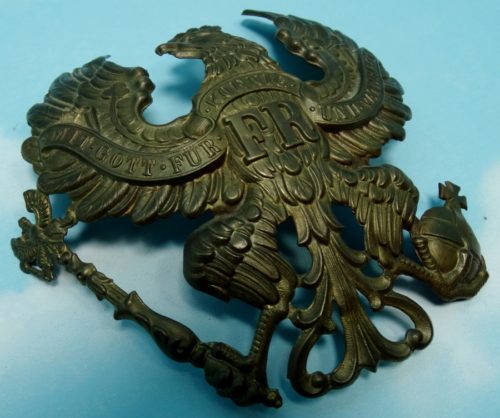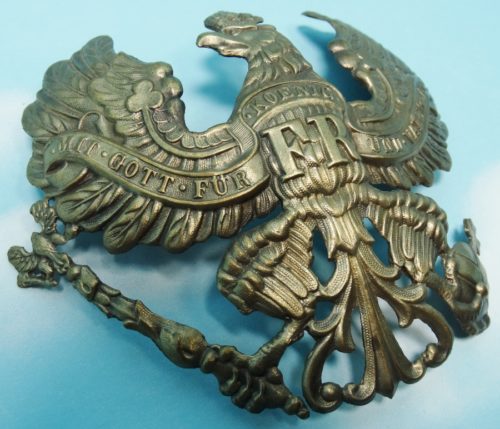Description
The Imperial German Period produced a wide variety of headdresses, including pickelhauben, kugelhelme, tschapkas, busbies, and tschakos. Because of the number of regiments, pickelhauben and kugelhelme were the most common. Busbies, tschapkas, and tschakos appeared in far fewer numbers. Canvas foul weather covers were produced for all the varieties. They protected the leather, felt, and even metal exteriors from rain, mud, etc. Today we are offering a foul weather canvas cover suitable for a tschako. It is made of feldgrau canvas. Circling the cover is a red band measuring 2 ½” in width. On the red band’s front the letters “V. A. M.” are stenciled. (They were what one might call “traffic troops” or perhaps a variation of the U.S. Army’s MP’s). The cover is in very fine condition. It has clips in the front and back that secure it to the tschako’s front and back visors. One other detail is a slit on the cover’s top in the front. It allowed the field badge (feldzeichen) to be inserted, so people could determine the wearer’s home state.





